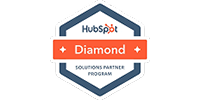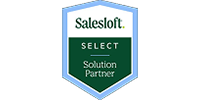The 2025 Go‑to‑Market Tech Stack: Strategy, Tools & Best Practices
In 2025, building a go-to-market (GTM) tech stack isn’t just a strategic decision; it’s a survival move. With the rise of data fragmentation, overloaded systems, and increasing pressure to do more with less, choosing the right tools and structure can make or break your GTM motion.
At FullFunnel, we work with companies of all sizes, from agile startups to sprawling enterprises, and the technology stack conversation looks radically different at each stage. But one thing is consistent: your GTM tech stack should empower your revenue teams, not slow them down.
So, how do you build a modern GTM stack that scales, adapts, and drives results?
Let’s break it down.
The 3 Types of GTM Tech Stack Archetypes
Every business fits into one of three general categories when it comes to GTM infrastructure:
1. Startups
Startups have the most flexibility and the least technical debt, but also the tightest budgets. Fortunately, the market has never been more favorable. Tools that used to cost thousands now cost hundreds (or less), and the barrier to building a solid CRM + marketing automation foundation has dramatically lowered. Think of it as the SaaS version of cheap electricity; you get more power for less.
2. Middle Market
This is where things get messy. As companies scale, IT oversight increases, systems begin to fragment, and decision-making slows down. The biggest risk here? Operational bottlenecks. When internal systems and decision structures limit the agility of sales and marketing teams, GTM performance suffers. Middle-market firms are often juggling tools like Salesforce, HubSpot, Pardot, Outreach, ZoomInfo, and Sixth Sense, many of which aren't fully integrated or adopted.
3. Enterprise
Enterprises are often running multiple tech instances across business units due to acquisitions or legacy systems. It’s not uncommon to find Frankenstein-style integrations duct-taped together to connect disparate ERPs, CRMs, and marketing systems. These companies often get results despite inefficiency, simply due to scale. But that inefficiency comes at a staggering cost, and most of it is avoidable with the right GTM strategy and cultural shift.
FullFunnel’s Recommended Go-to-Market Tech Stack
For GTM leaders looking to build a scalable and efficient stack, here’s what we’re using at FullFunnel and what we recommend based on what’s working:
CRM
- HubSpot remains the most accessible and flexible CRM for most companies. Its native marketing features and clean interface make it ideal for landing pages, contact management, and automation.
- Salesforce is still powerful, but unless you're operating at enterprise scale, its cost and complexity often outweigh the benefits.
Outbound Email & Prospecting
- Instantly (and similar platforms) allow for smart outbound using non-core domains, keeping your main inbox reputation safe.
- Avoid using your primary domain for outbound spin-up a separate email system for this purpose.
Social Outreach
- HeyReach supports LinkedIn automation and outbound social engagement at scale.
- These tools help bridge the gap between intent and action, enabling reps to create high-touch, targeted engagement flows.
List Building & Data Enrichment
- Clay has become the go-to for dynamic list building. It’s not just a contact scraper, it’s a logic engine for building signal-rich, conversion-optimized lists.
- Clay enables mid-market teams to replace multiple tools with one source of enriched truth for lead generation workflows.
Power Dialing
- Trellus is our preferred AI-powered power dialer. It removes idle time by queuing qualified dials, integrating AI coaching, and boosting connect rates in a low-desk-phone world.
Inbound Infrastructure
- Again, HubSpot wins for inbound. Tools like Zoho, Keap, or Pardot just don’t hold up in terms of usability, integration, or performance.
- HubSpot's ability to operate as an all-in-one platform is valuable, though there are signs that competitors are catching up.
For internal visibility into how all these tools fit together, check out our data transformation services, which align your systems and GTM motion for maximum efficiency.
The Middleware Movement: Why Integration Matters More Than Ever
The biggest shift in GTM stacks in 2025 is the rise of the middleware layer tools that sit between your core CRM and your endpoint solutions. These platforms (like Clay and Zapier) allow for custom logic, automated enrichment, and real-time signal routing.
Without middleware, even the best tools work in silos. With it, your stack becomes a connected, intelligent GTM machine.
For example, when paired with AI sales enablement, this middleware layer can turn simple lead lists into dynamic sequences powered by real-time behavior and fit scoring.
Final Advice for GTM Leaders in 2025
You don’t need more tools; you need better alignment.
The most successful GTM leaders aren’t the ones with the flashiest tech stack. They’re the ones who use data to narrow their audience, build processes around real signals, and iterate relentlessly.
As Matthew Iovanni puts it:
“You’re in a period of time now where you can use a sniper rifle at scale.”
Stop spraying and praying. Start targeting with precision.
Ready to Optimize Your GTM Tech Stack?
At FullFunnel, we help B2B teams design, integrate, and operate go-to-market systems that actually work. Whether you’re scaling your startup or streamlining enterprise complexity, we’ll build the stack that drives real revenue. Talk to a GTM Expert and take the guesswork out of your tech stack.










